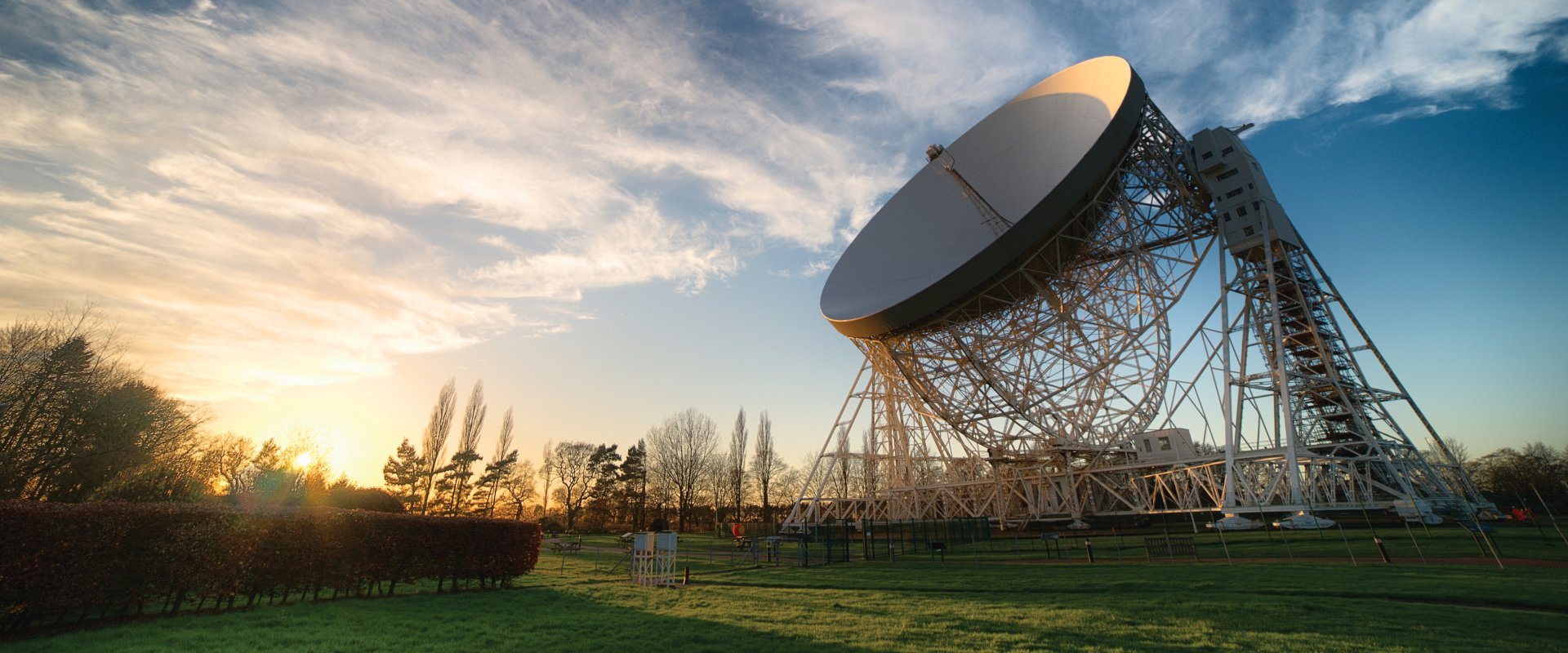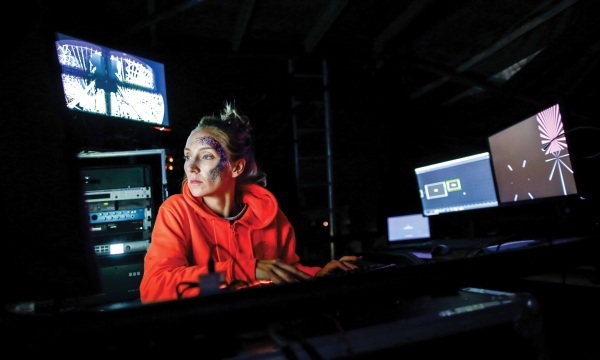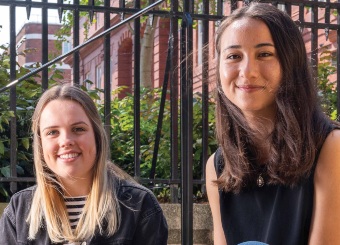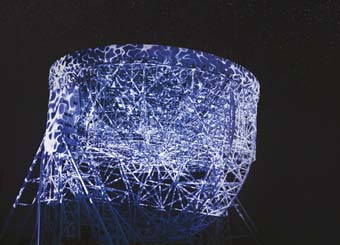There are just 32 UNESCO World Heritage sites in the UK. The majority of the landmarks have received the status for their historic and cultural significance, while others are celebrated for their natural beauty. Jodrell Bank, part of The University of Manchester, is the first to be named for its pioneering role in science.
Nestled in the heart of the Cheshire countryside, the Lovell Telescope first appears on the horizon as an almost alien feature surrounded by quaint villages and acres of farmland.
Situated at the Jodrell Bank Observatory, the world’s third largest steerable radio telescope has helped transform our understanding of the universe and paved the way for the site’s UNESCO World Heritage status.
A masterpiece of creative genius
Jodrell Bank is responsible for some of the most important discoveries in astronomy. It’s the place where Dame Jocelyn Bell Burnell researched the pulsars she jointly discovered. The observatory also played a vital role in demonstrating gravitational lensing, and in identifying quasars – huge, remote celestial objects that emit massive amounts of energy. Even the diminishing glow of the Big Bang was picked up by Jodrell’s powerful telescopes.
“Jodrell Bank Observatory is a masterpiece of human creative genius related to its scientific and technical achievements,” UNESCO judges stated. “The adaptation and development of radar and radio frequency reflectivity to develop radically new equipment [was] a key part in the development of entirely new fields of scientific research and led to a dramatic change in the understanding of the universe.”
The dawn of radio astronomy started with Sir Bernard Lovell, who began construction on the Mark I Telescope (later renamed the Lovell Telescope) in 1952. Completed in 1957, the telescope became instrumental in the space race that dominated world headlines during the 1950s and 60s. It was completed just in time to track the Soviet satellite Sputnik 1 and later tracked the Apollo’s safe landing on the moon.
Tracking spacecraft was never part of the original plan for the Lovell Telescope or Jodrell Bank – but it’s undoubtedly this for which it became famous.
This honours the pioneering work of founder Sir Bernard Lovell and the early scientists here.
The first radio astronomer
Sir Bernard was originally instrumental in developing aircraft radar systems during World War II, but once the conflict was over, he planned to use the equipment for more scientific purposes.
Professor Tim O’Brien, Associate Director of Jodrell Bank Observatory, says: “He certainly had no idea what he would be up to just 20 years later as he tracked the first missions to the moon.”
Arriving in army trucks, members of Lovell’s team, along with soldiers and local farm workers, helped unload radar systems used during World War II and set them up at a site previously used by Manchester’s Department of Botany. Sir Bernard planned to use this equipment to investigate cosmic rays – but it’s safe to say things soon escalated.
In 1951 Sir Bernard was named the world’s first Professor of Radio Astronomy – a post he held at Manchester.
One giant leap
The UNESCO status is due in no small part to the efforts of Professor Tim O’Brien, Associate Director of Jodrell Bank Observatory, and Professor Teresa Anderson, Director of the Jodrell Bank Discovery Centre. The pair embarked on what turned out to be ten years of tireless work in order to secure World Heritage status for the observatory.
“I think [the accolade] signifies the importance of this place in the history of humanity’s mission to explore the universe and to understand our place in it,” says Professor O’Brien.
“This honours the pioneering work of founder Sir Bernard Lovell and the early scientists here, together with the world-leading research that continues to this day,” adds Anderson. “Receiving this recognition will help us tell their story and the story of the communities connected to the site, both across the UK and worldwide.”
Jodrell Bank Observatory is a masterpiece of human creative genius.
The future is bright
Fifty years after the moon landing, the observatory is much more than a historic landmark.
Earlier this year, the headquarters of the Square Kilometre Array (SKA) project were opened on the site, creating a home for a new intergovernmental organisation. Designed to become a nexus of radio astronomy and a global hub for astrophysics, this international partnership is focused on delivering the final design of two SKA telescopes. Once built, the SKA telescopes will have an expected lifespan of at least 50 years, making the headquarters a focal point for radio astronomy for decades to come.
There are also plans for the First Light Pavilion, a state-of-the-art building that will bring together expansive exhibitions, educational facilities, a 250-seat auditorium and innovative projection space, creating a unique and inspiring experience for all.
And for music lovers, there’s the Observatory’s own festival, bluedot – a melting pot of art, science and music that this year saw people dancing in alien mirror-ball costumes, shin-deep in mud as Jarvis Cocker took to the stage to the sound of the Apollo 11 countdown.
Exactly 50 years to the day of the moon landings, thousands assembled by the Lovell Telescope as the iconic original transmission rang out through the darkness. As Neil Armstrong’s famous words filled the air, a cheer broke out among the awestruck crowd, mirroring the excitement that must have been felt in the Jodrell Bank control room 50 years ago.
Find out more about Jodrell Bank.





